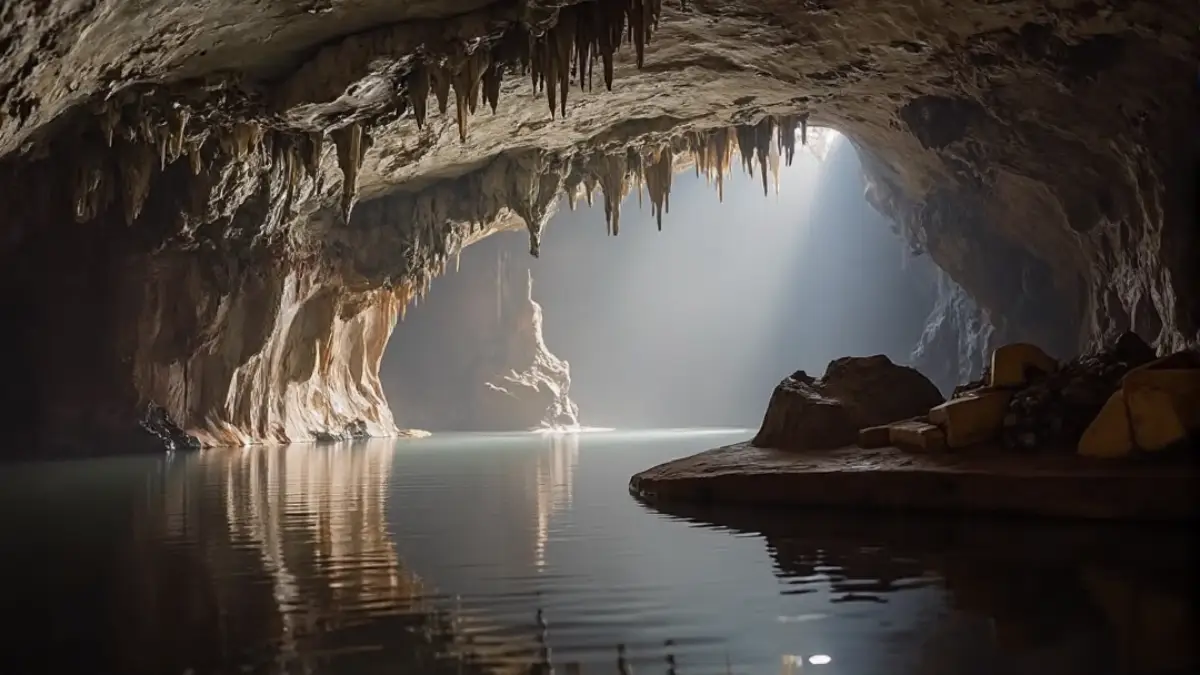In a historic milestone for regional cooperation, Vietnam and Laos have jointly achieved the designation of their first UNESCO Transboundary World Heritage Site. The Hin Nam No National Park in Laos and Phong Nha-Ke Bang National Park in Vietnam, connected by the Annamite Mountain Range, were officially recognized on September 21, 2025, during the 46th session of the UNESCO World Heritage Committee in New Delhi, India. This designation not only highlights the shared natural and cultural heritage of the two nations but also underscores their commitment to preserving biodiversity and fostering bilateral ties.
A Shared Natural Treasure
Spanning the border between Laos’ Khammouane Province and Vietnam’s Quang Binh Province, the newly recognized transboundary site encompasses a vast karst landscape renowned for its dramatic limestone formations, intricate cave systems, and rich biodiversity. Phong Nha-Ke Bang, already a UNESCO World Heritage Site since 2003, is celebrated for housing some of the world’s largest caves, including Son Doong, often described as a subterranean wonder. Hin Nam No, on the other hand, has gained attention for its untouched ecosystems and rare species, such as the critically endangered large-antlered muntjac.
The recognition as a transboundary site emphasizes the ecological continuity of the Annamite Range, a biodiversity hotspot that serves as a natural bridge between the two countries. Environmentalists have long advocated for joint protection of this region, citing the interconnected habitats that support migratory species and unique flora. The UNESCO designation is seen as a critical step in safeguarding this shared ecosystem from threats like illegal logging and poaching.
Strengthening Bilateral Cooperation
The journey to this achievement reflects years of collaboration between Vietnam and Laos, rooted in a shared history and mutual goals. Since the early 2000s, both nations have worked through frameworks like the Vietnam-Laos Intergovernmental Committee to align conservation strategies. This partnership gained momentum with a 2016 memorandum of understanding specifically targeting cross-border environmental protection.
Officials from both countries have hailed the designation as a symbol of unity. The recognition, from both countries is not just about preserving nature but also about cementing the deep friendship between culture and people. The decision—signifies Laos standing together with Vietnam to protect shared heritage for future generations.
Beyond symbolism, the transboundary status brings practical benefits. It facilitates joint funding for conservation projects, coordinated anti-poaching patrols, and shared research initiatives. Experts anticipate that this model could inspire similar collaborations elsewhere in Southeast Asia, where borders often cut through critical ecosystems.
Cultural and Historical Significance
The Annamite Range is more than a natural marvel; it holds profound cultural and historical importance for both nations. For centuries, the region has been home to ethnic minority communities whose traditions are intertwined with the landscape. In Vietnam, the Bru-Van Kieu people of Quang Binh Province have relied on the forests for sustenance and spiritual practices. Across the border in Laos, the Makong and other groups share similar ties to Hin Nam No’s rugged terrain.
Historically, the area served as a corridor during the Indochina Wars, with parts of the Ho Chi Minh Trail weaving through its dense jungles. While this past left scars, including unexploded ordnance that still poses risks, it also fostered a sense of shared resilience. The UNESCO designation offers an opportunity to reframe the region’s narrative, focusing on healing and preservation rather than conflict.
Challenges and Opportunities Ahead
While the designation is a triumph, it comes with significant challenges. Both parks face pressures from economic development, including infrastructure projects and tourism. In Vietnam, Phong Nha-Ke Bang has seen a surge in visitors since Son Doong Cave gained global fame, raising concerns about environmental degradation. In Laos, Hin Nam No remains relatively inaccessible, but planned road expansions could alter its pristine state.
Balancing conservation with economic needs will require careful planning. UNESCO guidelines mandate sustainable tourism frameworks, and both governments have pledged to prioritize eco-friendly initiatives. Joint training programs for park rangers and community-led conservation efforts are already in discussion, aiming to empower local residents as stewards of their heritage.
Funding is another hurdle. While international support from UNESCO and organizations like the International Union for Conservation of Nature (IUCN) is expected, sustained investment from both nations will be crucial. Analysts suggest that leveraging the site’s status to attract ethical tourism could generate revenue for conservation, provided strict regulations are enforced.
A Model for Regional Unity
The Vietnam-Laos transboundary site is only the fourth of its kind in Asia and the 13th globally, placing it among elite company. It joins examples like the Uvs Nuur Basin shared by Russia and Mongolia, illustrating how borders can become bridges rather than barriers. For Southeast Asia, a region often marked by geopolitical tensions, this achievement offers a blueprint for cooperation on shared challenges like climate change and habitat loss.
Environmental experts see broader implications. The success of this initiative could encourage other ASEAN nations to pursue similar designations, such as potential transboundary sites along the Mekong River or in Borneo’s rainforests. It also aligns with global efforts under the Convention on Biological Diversity to protect interconnected ecosystems.
Community Voices and Future Hopes
For those living near the parks, the designation carries personal significance. A Quang Binh resident, speaking to local media on September 22, 2025, expressed hope that increased protection would preserve the forests for their children. In Khammouane, community leaders have voiced optimism about job opportunities in sustainable tourism, provided their cultural practices are respected.
As Vietnam and Laos embark on this joint endeavor, the world watches with interest. The Hin Nam No and Phong Nha-Ke Bang transboundary site stands as a testament to what can be achieved when nations unite for a common cause. Whether it can withstand the pressures of modernity while preserving its ancient wonders remains an open question, but for now, it represents a beacon of hope for conservation and camaraderie in the heart of Southeast Asia.













